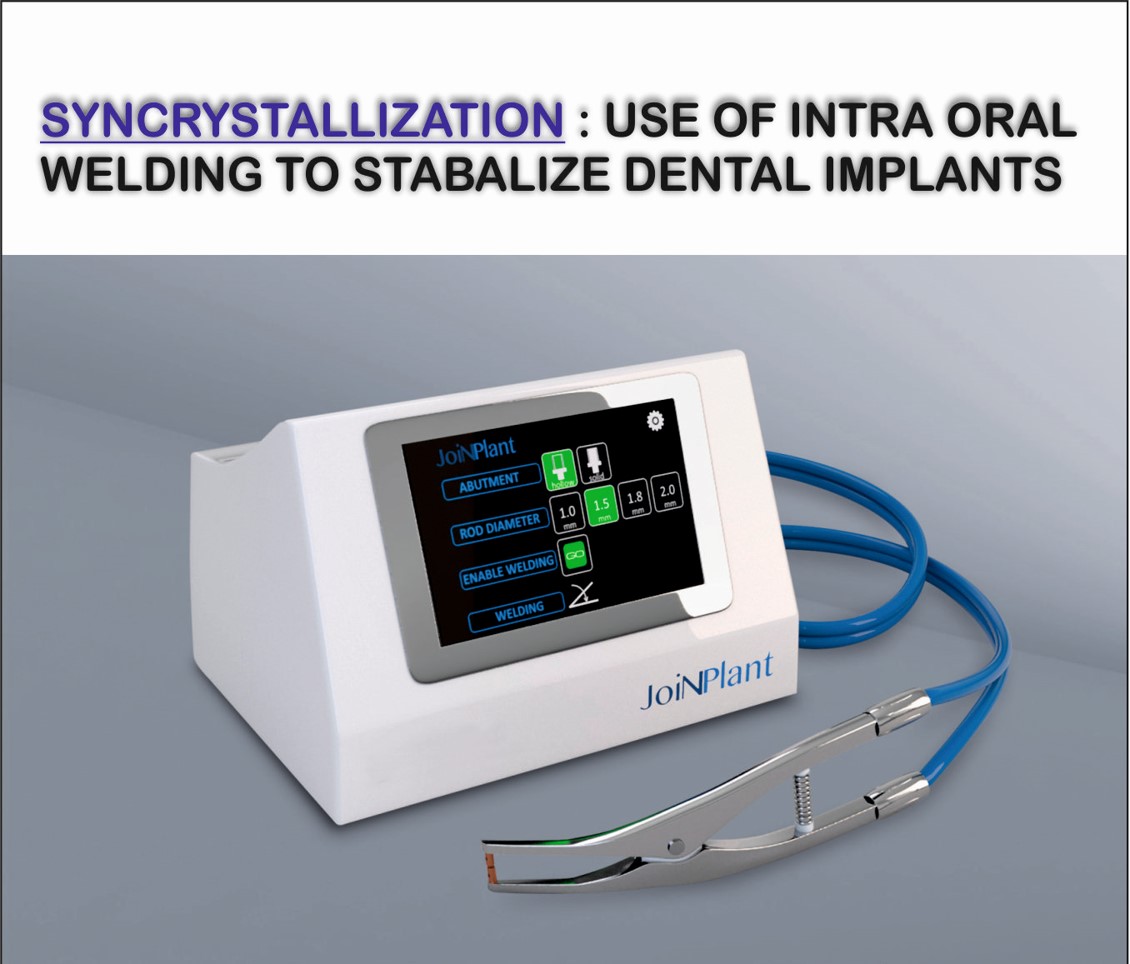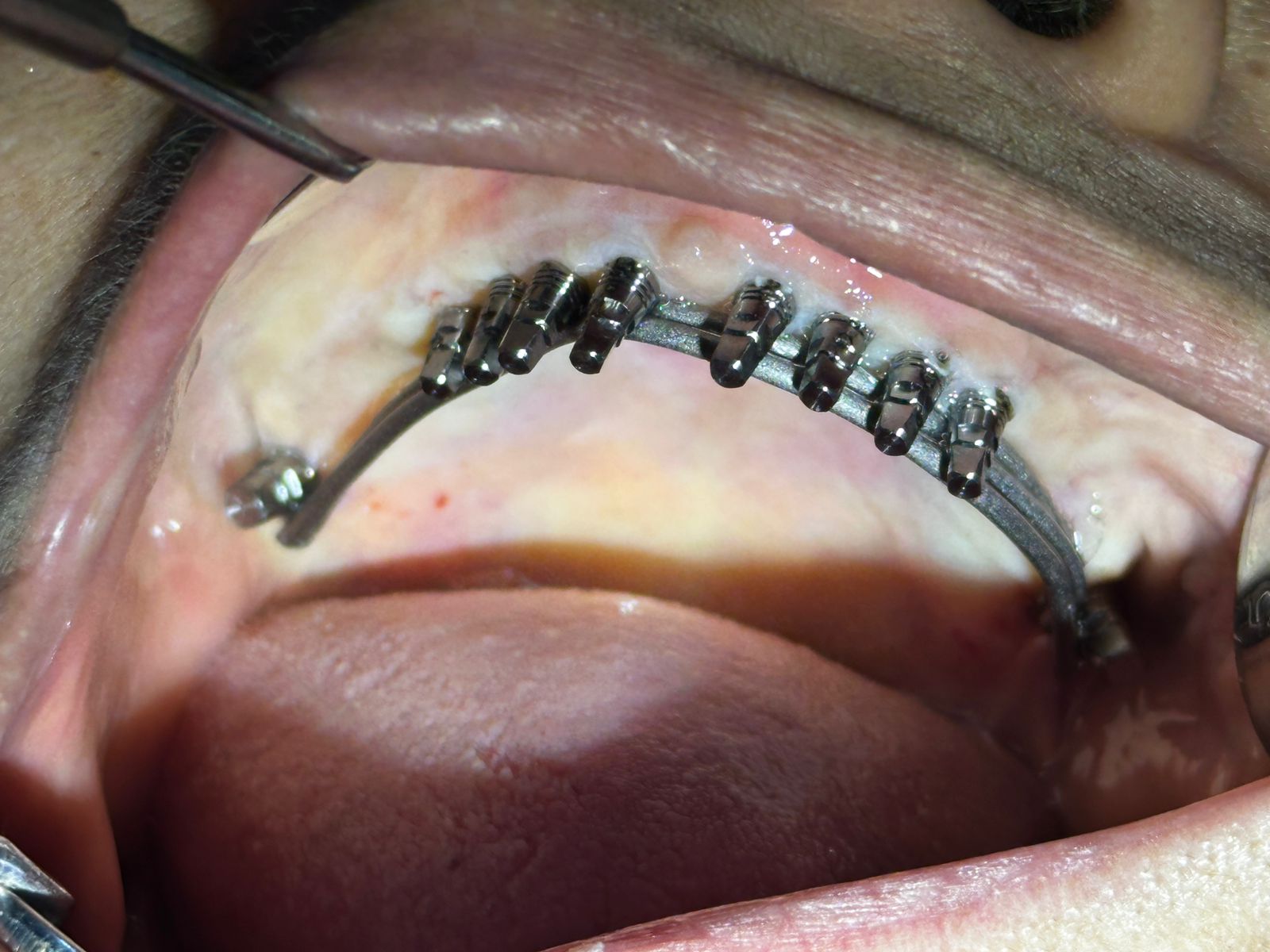



Intraoral welding is a technique of splinting abutments with welded titanium bars directly in the mouth to provide extra stability.
The procedure eliminates the possibility of errors or distortions during impression-taking, offering long-term success and high predictability.
Rigid splinting seems to play an important role in peri-implant tissue response, since it is able to reduce the stress on implants
Quick solution for providing healing stability and good prosthesis retention
can also be used with zygomatic implants. It has been used successfully to rehabilitate the edentulous atrophic maxilla with a permanently fixed prosthesis supported by an intraorally welded titanium framework attached to standard and zygomatic implants on the day as the surgery.
For example, orientation perhaps is less angulation when several implants are splinted this way
Acrylic restorations can suffer fractures and luting cement failures. Rigid splinting of multiple implants with intraoral welding technique results in predictable fixation in the early stage of bone healing avoiding the micromovement problem and possible loss of implants.
INTRA-ORAL WELDING FOR THE BEST RIGID STABILITY
Intra-oral welding is a clinical technique where titanium bars or wires are welded directly to titanium implant abutments inside the patient’s mouth, creating an immediately splinted and rigid prosthetic framework. This method offers superior stability for immediate loading cases.
Key Advantages for Rigid Stability:
Immediate Splinting of Implants – Welding links all implants into a single rigid framework, distributing occlusal forces and reducing micromovement.
Enhanced Primary Stability – Particularly valuable when individual implant stability is borderline; the splinting effect boosts overall stability.
Prevention of Micromotion – Reduces implant–bone interface stress, lowering the risk of fibrous tissue formation.
Immediate Functional Loading – Allows patients to receive fixed teeth in a single appointment without compromising osseointegration.
Uniform Load Distribution – Minimizes overload on any single implant by sharing functional forces across the entire welded structure.
Simplification in Challenging Cases – Especially useful in compromised bone situations or when implant placement angles vary.
Clinical Relevance in Cortico-Basal Implantology:
In cortico-basal systems, immediate loading is the norm. Intra-oral welding complements this by ensuring that the rigid splinting is achieved at the time of surgery, even before prosthetic completion.
Titanium’s weldability and biocompatibility make it the ideal choice for this process.
Bottom Line:
Intra-oral welding transforms multiple implants into a unified, rigid structure within minutes, providing the best possible mechanical stability for immediate functional loading—a critical success factor in advanced implantology.
Proudly powered by Monoimplants .